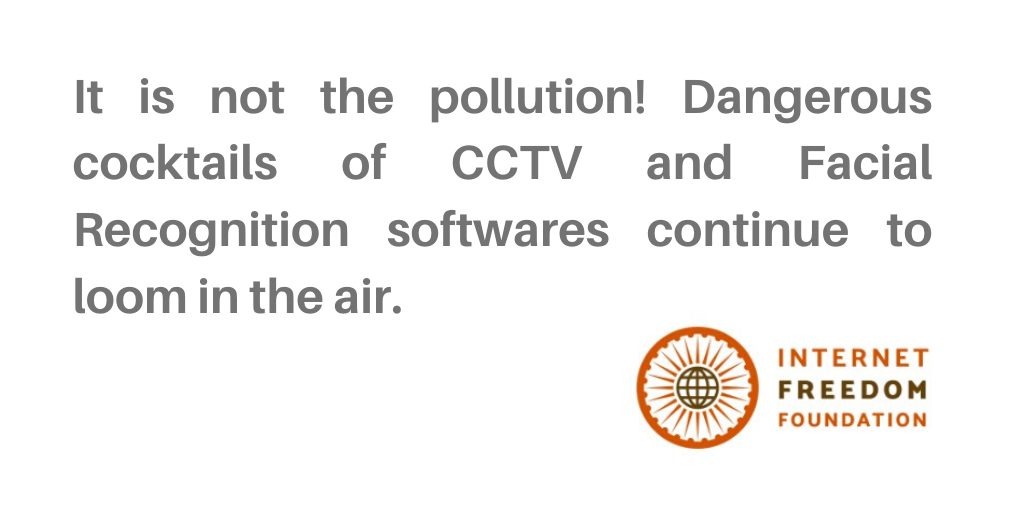
Tl;dr
The concoction of CCTVs and Facial Recognition continue to ring alarm bells. We recently even received a response from the NCRB to a legal notice sent to them. But in light of the continuing growing concerns of CCTVs and facial recognition technology in the recent weeks, we throw a few more kicks to fight against this trajectory of mass surveillance.
Our worries still remain
Facial recognition softwares have created a cause for concern not only in India but across the world. Blatant issues of misindentification, discriminatory profiling and just incredibly high levels of inaccuracy have been demonstrated even by researchers in Georgetown and MIT.
Recently, in the Delhi High Court in Sadhan Haldar v. The State NCT of Delhi & Ors (W.P. (CRL) 1560/2017) before the High Court of Delhi, the Ministry of Woman and Child Development has submitted that the facial recognition software used by the Delhi Police to identify missing children is so inaccurate that not only was its match rate only 1%, it also misidentified pictures of boys with that of girls.
Step by step attack
- Axe Kick: Correspond with Government bodies
We sent a legal notice to the NCRB with a copy to the Ministry of Home Affairs (MHA) on the illegality of the tender for Automated Facial Recognition Systems explaining the current lack of legislative safeguards to oversee such a technology and the features that create widespread cause for concern (Read here for more).
Our previous post updated you on the back and forth we've had with the NCRB recently. - Vertical Front Kick: Few Questions
As always, we're armed with all the RTI's we could possible file. So in response to one sent to the NCRB, we were given minutes of the meeting held with the bidders for the AFRS but other information requested was denied on account of the tender process still going on. According to the response, most vendors asked for an extension; specifically for a consortium to bid for the tender, certain standards required by the systems and especially whether systems should be able to identify cases of plastice surgery (Have a closer look at the response).
We have filed another RTI with the Airport Authority of India on the deployment of facial recognition in airports in Varanasi, Pune, Kolkata, Hyderabad and Vijaywadi for copies of tenders, bids and minutes of any meetings. - Final leg sweep: Floods of Questions
The deployment of such facial recognition systems is largely reliant on the installation of CCTVs and is being conducted extensively in various states. Hence, we filed RTIs with the states of New Delhi, Bangalore, Jammu and Kashmir, and Maharastra.
Delhi: Informed that most of the information abouf the Request for Proposal and bids submitted was available in the public domain and that no entities were empanelled for the project (Read here for more).
Maharashtra: It provided information of the number of cameras, the period of storage and the agencies that have access to the CCTV footage (Read here for more).
Concerned with how this has extended to installation of CCTV's in schools as well, on the request of a student that reached out to us, we filed an RTI with Rajiv Gandhi National University of Law in Punjab on the CCTVs on campus. The response was overwhelming with a total of 74 CCTVs and even specified a list of locations where the CCTVs are located (Read here for more).
We are well aware of the limited public funds in place and systems that are neither accurate nor in accordance with the protection of individual fundamental protections are an incredible cost to public exchequer and the rights of an individual. While these technologies may be a comforting scarecrow, we need to be careful of its eyes in disguise.
Important Documents:
- Response to the RTI filed with the National Crime Records Bureau dated 09.09.2019 [link]
- Response to the RTI filed with the State of Maharashtra on CCTVs [link]
- Response to the RTI filed with the State of New Delhi on CCTVs [link]
- Response to the RTI filed with the Rajiv Gandhi National University of Law on CCTVs [link]
- Recent post on Facial Recognition Systems [link]
Everybody is kungfu fighting... against mass surveillance! Become an IFF member today!
